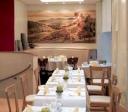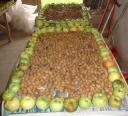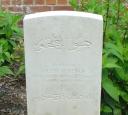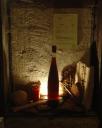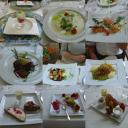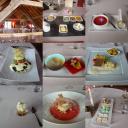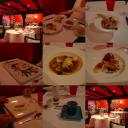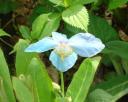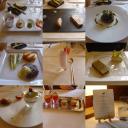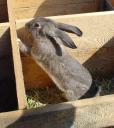Click on this link to download an Adobe Acrobat version which you can print out E2EYear6Weeks22-31.pdf
You can click on the photos to see larger versions
This is a very special day in Entre-deux-Eaux’s year. If you had listened carefully a few minutes ago, amid the gusts of wind you may have heard the tinkle of sleigh bells. And you would have known that Saint Nicholas and his wicked assistant Père Fouettard have just entered our village hall where all the village children have assembled. At this very moment the good saint will be asking each child if they have been good all year. Then, amid chaos (for E2E’s Saint Nicholas lacks authority), he will listen to their fragments of songs and recitations, and distribute sweets.
He has reached Entre-deux-Eaux a week earlier than elsewhere. Perhaps this is because most of the same children will be rushing off to Saint Dié next weekend, at the proper time, to watch a very different and more dignified Saint Nicholas drive in splendour through the streets of Saint Dié, preceded by numerous floats, marching bands and twirling girls. Sweets will be thrown from the floats. Some years there are fireworks outside the cathedral, this year we are promised balloons. Then Saint Nicholas will disappear impressively through the cathedral doors until next year.
Unseasonally, the fields aren’t white with snow to greet Saint Nicholas today. But we have had snow. The first snow, way back in late October, took us by surprise. We were on our way to Basel airport to meet John’s sister Ann, her husband Derek and their elder son Steven (visiting for John’s birthday). The prettiest route starts off by going through the next village of Mandray, climbs 260 metres to the Col de Mandray, then bumps along a forest road to the spectacular viewpoint at the Col de Bagenelles. This latter section of road appears to snake round the contours in so gentle a fashion that you have no sensation of climbing a further 310 metres.  And as we imperceptibly climbed we found that snow had fallen. The autumn leaves were still so pretty, glowing golden through the white powdering. Of course, snow at 1,000 metres should not be surprising towards the end of October, but many of us have fond memories of standing around outside the Blanche Neige restaurant in the sunshine (and in short sleeves) at John’s previous year’s big birthday. (And it has to be said that snow on the heights was not as unexpected as the cause of a diversion on our previous trip to the airport to pick up Ellen, namely frozen pigs on the road. That time we’d taken the main road which the lorries use. And one of these huge lorries had gone over the edge with its load of pork).
And as we imperceptibly climbed we found that snow had fallen. The autumn leaves were still so pretty, glowing golden through the white powdering. Of course, snow at 1,000 metres should not be surprising towards the end of October, but many of us have fond memories of standing around outside the Blanche Neige restaurant in the sunshine (and in short sleeves) at John’s previous year’s big birthday. (And it has to be said that snow on the heights was not as unexpected as the cause of a diversion on our previous trip to the airport to pick up Ellen, namely frozen pigs on the road. That time we’d taken the main road which the lorries use. And one of these huge lorries had gone over the edge with its load of pork).
We often meander back from the airport through the wine villages (and their cafés). We misguidedly decided to bring Ann, Derek and Steven back along the route de Crêtes. For that first snow had reminded us that the mountain route would soon be closed to all except skiers and walkers. And it would be nice to sit and admire the wonderful views from a mountain-top café. It was a bit of a shock to find that the whole ridge was sheathed in dense white mist. Views were reduced to the few feet in front of the car. The ski tow cables were lying across the road, being overhauled. The cafés were all shut due to bad weather. Everything was clammy and miserable.
But then the next day we were in a different climate again. You may recall mention of Saint Alexis in a previous newsletter. The saint who ran away on his wedding day and lived the rest of his life anonymously under the staircase at his parents’ house? We’d always intended to return to eat at the Saint Alexis restaurant in the middle of the forest. Over a leisurely breakfast we decided to spend our visitors’ first day wine-tasting in Alsace, stopping en route at the Saint Alexis for lunch. “Traditional Alsacien food can be quite hearty!” we’d warned. But that didn’t sound a bad idea in preparation for wine tasting.
Given its remote forest setting, we were surprised how packed it was. But this was no posh restaurant. Many of the diners were wearing walking boots. There were dogs, rucksacks and walking poles under many tables. The waiters were swooping and dashing at high speed, but making time to stop and chat with the learning-disabled group next to us. We once went to a posh restaurant where there was a very expensive truffle on display at the reception desk, and you practically had to genuflect to it. The Saint Alexis was less aspirational: on their dark, polished bar there stood a large pointed cabbage.  The crockery had pretty scenes of every-day life in Alsace, but sadly the rapid turnover of courses and plate juggling into the dishwasher had chipped it badly. First came the huge tureen of soup. It was delicious. The kind that gets added to day by day till it has an indescribably rich flavour. We couldn’t resist seconds, although we’d seen the heaped plates to follow. Some of us then had an intermediate course, to prepare us for the main course – either omelette, ham and crudités or sausage-meat pie and crudités. After that came the heavy stuff – choucroute for some, chicken casserole or smoked pork for others (not to mention the potatoes or pasta in case we were still hungry). We rounded off with a selection of fruit tarts.
The crockery had pretty scenes of every-day life in Alsace, but sadly the rapid turnover of courses and plate juggling into the dishwasher had chipped it badly. First came the huge tureen of soup. It was delicious. The kind that gets added to day by day till it has an indescribably rich flavour. We couldn’t resist seconds, although we’d seen the heaped plates to follow. Some of us then had an intermediate course, to prepare us for the main course – either omelette, ham and crudités or sausage-meat pie and crudités. After that came the heavy stuff – choucroute for some, chicken casserole or smoked pork for others (not to mention the potatoes or pasta in case we were still hungry). We rounded off with a selection of fruit tarts.
Incidentally, while we’re on the subject of choucroute (which gets a periodic rather scathing mention in our newsletters), John read a recent newspaper item about the Great Hamster of Alsace. No, I don’t think it’s an early April fool. The beast is otherwise known as Cricetus cricetus and there are only 600 left in eastern France. Not surprisingly the cabbage farmers have long considered it a pest, as its favourite food is cabbage. Since many of the former cabbage fields are now being used to grow more lucrative maize, the Great Hamster of Alsace is dying out and the European Commission is threatening to fine France seventeen million euro for failing to protect an endangered species.
Anyway, back at the Saint Alexis, we’d had an excellent sweet local wine to accompany our (un-nibbled) choucroute, smoked pork etc. And despite coffee at the end, we felt that further wine-tasting (as originally planned) was not such a good idea after all. What we needed was a good walk. John (whose knees were painful) drove the car down to the Riquewihr, whilst the rest of us had a great walk downhill through the autumn leaves of the forest until we reached the vineyards around Riquewihr. Riquewihr was looking very pretty as we met up with John, and we strolled round the old streets, finishing in the small corner shop which expands inside to a subterranean palace of Christmas decorations: frosted baubles, stars, cribs, advent calendars, musical boxes, nutcracker figures, bears and candies.
By the end of October all the flea markets were well and truly finished. We hadn’t had many exciting finds this year. (In fact I think our visitors did better! Ellen was delighted to find a string of bright yellow wind-up metallic ducks and a green hand embroidered night-dress case at Saint Dié’s big flea market, whilst Leila found a beautiful vase for her new house and a green-stemmed Alsace wine glass to complete a set she already had). However, other markets take their place in winter – usually food-related ones. And so Ann, Derek and Steven got dragged off to the annual smoked pork fair at Plainfaing. We had fun there as there were also clothes, rabbits, second hand stalls, a marching band, twirling girls and copious advice from other customers about which cheeses and ham to purchase. 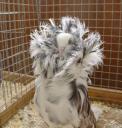 In preparation for consuming our purchases we took a pleasant hill-top stroll on our way back and picked juniper berries (despite prickled fingers). The previous day we’d been to a big rabbit show and competition. Normally they exhibit farmyard birds as well, but recent scares over avian flu had curbed initial enthusiasm for that, so there were only a few last minute birds entered.
In preparation for consuming our purchases we took a pleasant hill-top stroll on our way back and picked juniper berries (despite prickled fingers). The previous day we’d been to a big rabbit show and competition. Normally they exhibit farmyard birds as well, but recent scares over avian flu had curbed initial enthusiasm for that, so there were only a few last minute birds entered.
John’s birthday meal was at the Ducs de Lorraine in Epinal. We were delighted that the fastidious Madame was on leave that day, so the atmosphere was relaxed and we had a wonderful meal. By dessert, Derek could only manage a modest sounding fruit salad. To his amazement he got a ring of seven glass bowls each containing a different fruit in an appropriate liqueur.  After that another walk was needed. John and I slipped into an exhibition of old Lorraine farmhouses. In the courtyard were some artistic metal cows. A few of them were lying waving their legs in the air. We felt we could easily join them!
After that another walk was needed. John and I slipped into an exhibition of old Lorraine farmhouses. In the courtyard were some artistic metal cows. A few of them were lying waving their legs in the air. We felt we could easily join them!
But the autumn hasn’t been all about food. There have been a few cultural touches. On European Heritage Day, Ellen and I went to an interesting talk on the history of the Jews of Saint Dié. It was followed by a look at the museum’s Yvan Goll collection (poet, born Saint Dié 1891, wrote in both French and German). Then we visited the synagogue which is normally shut-up as there are now insufficient Jewish men for any sacred rituals to be performed there. Outside the synagogue is the memorial to the Jews of Saint Dié who were all rounded up and deported to the camps. Sadly anti-semitism can be seen in all epochs: we next looked at two of the cathedral’s mediaeval windows (removed and preserved during times of war and the dynamiting of the cathedral) which show Jews vilified as sorcerers and murderers of babies. Our tour finished (appropriately) in the Jewish section of the cemetery.
The following week the Romanians were in town. The theme of the International Geography Festival was dwindling energy resources, which set a gloomy tone. However, the invited guest country, Romania was a popular choice. Their café scored a hit serving Vosgian-type specialities of spicy sausages, cabbage, wine and coffee, and their four roving brass bands had little girls and their mamas dancing on street corners whilst little boys looked enviously at the instruments and their papas circled taking photos and recording on their mobile phones. The local history society’s lectures followed the themes. So I heard talks ranging from the impact of hydraulic power on the Meurthe Valley to vampires (a tribute to Romania). An eminent Benedictine monk at the nearby Abbey of Senones, Don Calmet, had in the Age of Enlightenment, written about vampires in his treatise on angels and demons, but had concluded there was no evidence for their existence (and they weren’t in the Bible). Meanwhile (back to food), John was learning how do interesting things with pineapples and snails (separate dishes, I’m glad to say).
We also spent a fascinating morning while Ann, Derek and Steven were with us when we were offered our own special tour of Fort Kléber. I had come across mentions of a Fort Bismark, outside Strasbourg, as a dismal transit camp for allied prisoners of war.  Fort Bismark had been built by the Germans between 1872 and 1875 (after they’d annexed Alsace) as part of a circle of forts round Strasbourg (to deter the French from taking it back again). Much of the manual work was done by Italians, infiltrated by French spies. The spies reported it was so strong that the French army never did attack it. However, after Alsace was returned to France at the end of the first world war, the French army acquired the fort, used it as a garrison and store and re-christened it Fort Kléber after one of its own heroes. Of course it changed hands again during the Second World War, when it was used for the aforementioned POWs (who found it very cold and insanitary). We were fortunate to see parts most visitors don’t see: the brick-lined counter-saps dug under the surrounding fields to listen out for possible saps (tunnels) being dug by the French in order to set explosives beneath the fort’s walls. The gunpowder room and its ventilation was fascinating too (when the fort was built they were still using cannons). And then there was the section where the POWs were probably held and the dry moat where they would have exercised.
Fort Bismark had been built by the Germans between 1872 and 1875 (after they’d annexed Alsace) as part of a circle of forts round Strasbourg (to deter the French from taking it back again). Much of the manual work was done by Italians, infiltrated by French spies. The spies reported it was so strong that the French army never did attack it. However, after Alsace was returned to France at the end of the first world war, the French army acquired the fort, used it as a garrison and store and re-christened it Fort Kléber after one of its own heroes. Of course it changed hands again during the Second World War, when it was used for the aforementioned POWs (who found it very cold and insanitary). We were fortunate to see parts most visitors don’t see: the brick-lined counter-saps dug under the surrounding fields to listen out for possible saps (tunnels) being dug by the French in order to set explosives beneath the fort’s walls. The gunpowder room and its ventilation was fascinating too (when the fort was built they were still using cannons). And then there was the section where the POWs were probably held and the dry moat where they would have exercised.
It is now a week since I started writing this. So Saint Nicholas has visited most other villages and towns, the Christmas markets are in full swing, and Leila is visiting. After we’d collected her from Baden-Baden airport (off a flight that cost her one pence plus a few taxes) we spent time in Strasbourg. IKEA was good for breakfast and some Christmas shopping  (try and visualise an IKEA car-park on a Saturday morning that is only half-full and queues of two or three at the tills!) Then we wandered round the quainter street markets in the old part of town (much more crowded with tourists as it was the first weekend of the Christmas market!). The largest market is under the soaring sculpture of the great west door of the cathedral, one is by the canal and others are in various squares.
(try and visualise an IKEA car-park on a Saturday morning that is only half-full and queues of two or three at the tills!) Then we wandered round the quainter street markets in the old part of town (much more crowded with tourists as it was the first weekend of the Christmas market!). The largest market is under the soaring sculpture of the great west door of the cathedral, one is by the canal and others are in various squares.
And the next day we drove over the Col de la Schlucht to a small village near Munster. Breitenbach-Haut-Rhin must be unique in holding its Christmas Market in the cellars of an old brewery (the rest of the brewery was destroyed during the First World War). As you enter, there is a crèche vivante between the wrought ironsmiths and honey makers (though at lunch time, only the sheep, a cow and a rather sad donkey were still in the stable). You follow the subterranean tunnels which are lined with colourful stalls of pottery, cheese, wooden boxes, sausages, embroidered hangings, candles, patisseries, jewellery, bird-feeders and Christmas decorations. Up some steps is a display of carved nativity scenes from around the world (with a lovely Peruvian one set on a boat). And then the tunnels lead into a large refectory, with a blazing fire in the centre and meals being served. After lunch Mary, Joseph, and baby Jesus were going to return to the crèche to take part in carols. As we drove back, a rainbow arched from the white mountains and fell into the valley on the village roofs just in front of us. It felt as if we would drive right through its shiny colours.
With that seasonal scene, we wish you all a very happy Christmas and all the very best in 2008. Perhaps we’ll see you in Entre-deux-Eaux next year?


